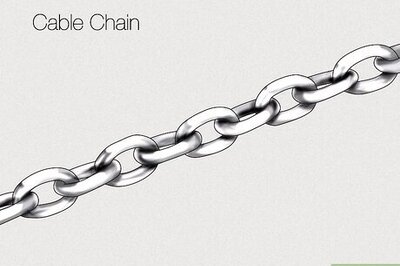
views
The verdict of the Maharashtra and Haryana Assembly polls can be read in two ways: as a win for the BJP against anti-incumbency (when seen in conjunction with Vidhan Sabha 2014) or a loss of ground (vis-a-vis Lok Sabha 2019).
Arguably, voters continue to repose faith in Prime Minister Narendra Modi and his party. But they want Modi to live up to their image of him. The Modi brand evokes a dynamic leader who, in his own words, is shaping a New India “not to be bound by unnecessary bonds of the past… (is) strengthening its own present, (and) is also deciding its own future”.
Modi has a mandate for reforms and voters have reminded him of that fact. The Maharashtra and Haryana elections were not a referendum on the abrogation of Article 370, or his policy on Pakistan and terrorism, or the policies of Modi 1.0. These measures had already received public endorsement and did not need electoral validation.
Public attention has shifted to the chronic problems plaguing the political economy of India: the agrarian crisis, unemployment, economic slowdown, banking debacle and reining in the radical right. The incrementalist approach to economic issues has failed to get rid of red tape, or shift focus from state to private capital. Administrative and economic reforms are long-pending. Middle-income groups are restive. It is time, again in Modi’s own words, to “challenge the challenges”.
His USP has always been expressed in comparative terms: dynamism in contrast to policy paralysis, a level playing field as opposed to minorityism, a pro-growth orientation over welfarism and so on. But the doubling down on social programmes, the slow pace of reforms and the delay in addressing farmers’ concerns evokes the UPA regime.
On the political front, the verdict calls into question the BJP’s continuing Modi-centricism. Modi carried both states just four months ago, but neither chief minister has been able to maintain the feel-good factor at the same level. In Haryana, the BJP’s shrunken footprint is being attributed to Jat assertion and flawed ticket distribution, as well as the industrial slowdown.
In the past, the BJP’s state-level leaders were capable of managing social conflicts and mobilising public support in their respective territories, without looking to the central leadership. This is no longer the case. State leaders need to tune up their organisation and public delivery systems and the central leadership needs to give them adequate wiggle room to do so.
In the long run, the overdependence on the PM will be counterproductive. The present Narendra Modi-Amit Shah scenario is different from the long stewardship of the Atal Bihari Vajpayee-LK Advani duo. For one thing, they had nurtured a robust second rung. Granted, none of them made it to the PM’s post, but at least two of them could have.
The absence of a strong second-rung leadership is reflected in the emasculation of the political executive vis-a-vis the bureaucracy. The inevitable overdependence on babus and technocrats can only lead to status quoism, which is at odds with Modi’s own dynamism.
The BJP’s organisational problems also stem from rapid growth. The induction of new members has annoyed or even alienated the old. The discipline and commitment of a largely cadre-based party is increasingly hard to maintain in a mass-based one. Feedback mechanisms are disrupted and ticket distribution becomes a chaotic exercise in deal-making, as was the case in Haryana. This is where the Rashtriya Swayamsevak Sangh, in the form of the BJP’s organising secretary, needs to step in.
The RSS has stood firmly with Modi, following a give-and-take policy of mutual cooperation. It tends to take the long view, so it must have considered the fact that, if he retires at 75 as all pracharaks do, a post-Modi scenario is looming. A Modi comes along only once in a generation. At the current juncture, it does not seem that anyone – Amit Shah included – can fill his shoes. Where will the BJP stand then?
That’s still a good six years away and the BJP will face two tough challenges in the near future under his leadership – the assembly elections in Delhi and Bihar. Perhaps opinion pollsters – all but one predicted a massive sweep for the NDA in both states – will get it right next time.
(The author is a senior journalist. Views are personal)




















Comments
0 comment